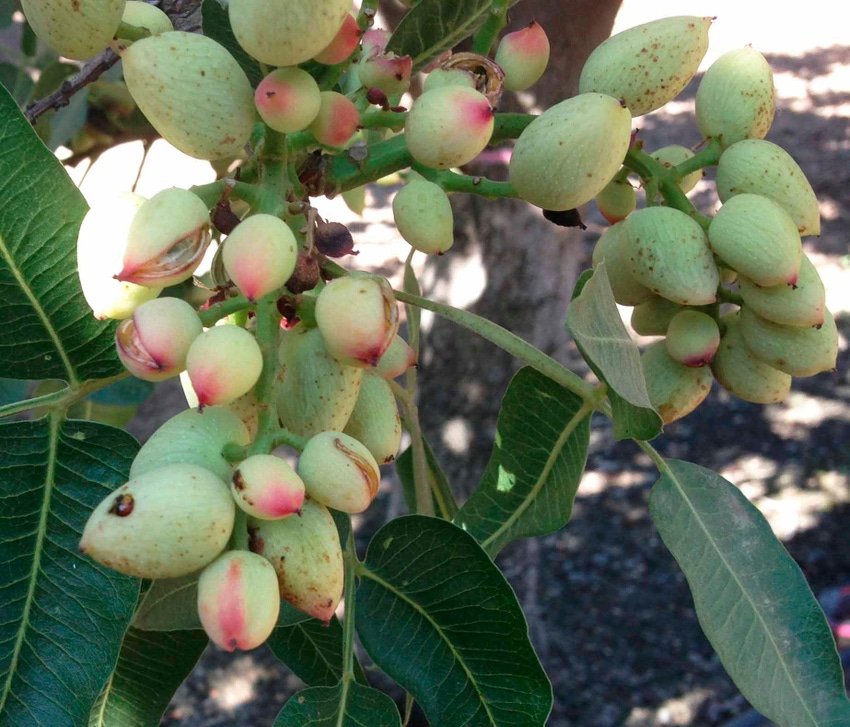June 14, 2017

Sponsored Content
By Jeff Pacheco, DuPont Crop Protection technical sales agronomist
Q: What are the most effective control strategies for managing navel orangeworm (NOW) in pistachios, and what factors influence spray timing?
In orchards with heavy NOW pressure, protecting pistachios as early as pea-split may be critical to preserving nut quality. With newer insecticides, it’s better to err on the side of caution and make the first application a little early rather than a little late.
DuPont™ Altacor® insect control powered by Rynaxypyr® is a good first-spray option because its duration of activity provides some application flexibility. Altacor® provides long residual, ovicidal,1 ovi larvicidal, larvicidal and adult activity2,3 on navel orangeworm and is an important part of an effective NOW management program.
Track Key Degree-Day Points
Research conducted by entomologist Joel Siegel, USDA San Joaquin Valley Agricultural Sciences Center, Parlier, California, has identified four important times to intensify scouting and make insecticide applications if needed: 1,700; 2,200; 2,700; and 3,000 to 3,200 degree days (starting from January 1).
These flight times for navel orangeworm in pistachios are good guidelines, since an effective application should be made before peak egg laying. Based on these degree-day points, the first application may need to be made a little earlier than normal in some orchards due to crop phenology. That’s certainly a possibility this season.
When it comes to determining the best time to spray, crop development stages and pest pressure should always trump degree days. The first application should help to knock down the early NOW population and prevent a pest buildup. Second and third sprays that coincide roughly with 2,200 and 2,700 degree-day points might also need to be made a little earlier, depending on pressure, climate conditions and days to harvest.
With the threat of a possible fourth NOW generation, growers seeing higher pest pressures should consider a fourth spray timed between the 3,000 and 3,200 degree-day accumulation points. Later sprays are important for producers using two-shake harvesting, which can put some of the crop at greater risk for late-season damage.
Manage Against Insect Resistance
Resistance management is an important element of an effective integrated pest control program and especially important with NOW. As more pistachio trees come into production, the increase in tree nut acres is leading to escalating pest pressures. We’ve already seen some types of insecticides, such as pyrethroids, become less effective against NOW following multiple applications during the season.
It’s important to avoid treating successive NOW generations with insecticides that have the same IRAC group number. Altacor®, an anthranilic diamide (Group 28) insecticide, fits well into a rotational program, providing long-lasting control of NOW and only a 10-day preharvest interval.
For more information on how Altacor® can help you control NOW, talk to your DuPont retailer or visit altacor.dupont.com.
1. Significant ovicidal activity is observed at varying levels, depending on pest species. Activity is maximized when eggs are laid onto treated surfaces.
2. Disruption of adult insect behaviors in some pest species is observed (e.g., codling moth, oriental fruit moth), such as mate finding, mating, oviposition, feeding, locomotion and orientation.
3. Adult mortality is species, application rate, exposure level and time dependent for NOW (based on lab and field studies).
Always read and follow all label directions and precautions for use.
Unless indicated, trademarks with ®, ™ or SM are trademarks of DuPont or affiliates. © 2017 DuPont.
You May Also Like




